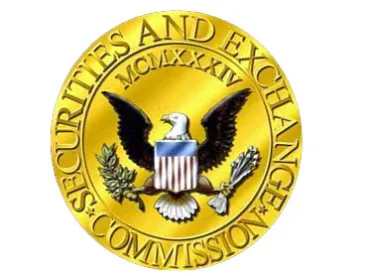On March 31, the staff of the Division of Corporation Finance (the Staff) of the Securities and Exchange Commission issued a staff statement (the Staff Statement) relating to accounting, financial reporting and governance issues for private companies to consider before engaging in a business combination with a special purpose acquisition company (SPAC).
Shell Company Restrictions
The Staff Statement serves as a reminder of important limitations under the federal securities laws that apply to SPACs, given their status as shell companies under the federal securities laws, and that should be considered in the context of a business combination. These shell company limitations include:
-
A requirement to file with the SEC financial statements for the target business in a SPAC business combination within four business days of completion of the business combination. The 71-day extension period applicable to acquisitions of target businesses by operating companies does not apply in the context of a SPAC transaction.
-
The combined company following a SPAC business combination is not eligible to incorporate by reference into Registration Statements on Form S-1 its reports filed pursuant to the Securities Exchange Act of 1934 (Exchange Act), proxy statements or information statements until three years after completion of the business combination.
-
The combined company following a SPAC business combination is not eligible to use Form S-8 for the registration of compensatory securities until 60 calendar days after the combined company files its “Form 10 information” upon completion of the business combination.
-
The combined company will remain an “ineligible issuer” as defined under the Securities Act of 1933 (the Securities Act) for three years following completion of the business combination, meaning that, during that period, the combined company (1) cannot qualify as a “well-known seasoned issuer,” (2) may not use free writing prospectuses in the context of registered securities offerings, (3) may not conduct a roadshow in the context of a registered securities offering that constitutes a free writing prospectus, including an electronic roadshow, and (4) may not rely on the safe harbor of Rule 163A of the Securities Act, for statements made in advance of filing a registration statement for a securities offering.
Additionally, although not specifically mentioned in the Staff Statement, under existing SEC rules and guidance, the combined company following a business combination will not be eligible to use Form S-3 for short-form registrations until one year following the business combination. In addition, as a former shell company, the combined company will not be eligible to use Rule 144 until one year after the Form 10 information becomes available upon completion of the business combination.
Books and Records and Internal Control Requirements
The Staff highlights in the Staff Statement that public companies with Exchange Act reporting obligations are subject to (1) the “books and records” provisions of the federal securities laws, which require public companies to maintain books, records and accounts in reasonable detail that accurately and fairly reflect the company’s transaction and disposition of assets, and (2) the “internal controls” provisions, which require companies to devise and maintain a system of internal accounting controls “sufficient to provide reasonable assurances about management’s control, authority, and responsibility over the issuer’s assets.” These obligations, the Staff states, are among the most important for effective and reliable financial information for investors and markets. These requirements generally apply to a SPAC before it consummates a business combination and to the combined company following completion of the business combination. The Staff states that it is important for the SPAC and target business in a business combination to consider these requirements, given that the private target company may not have experience with annual or interim reporting, application of SEC rules and disclosure obligations and the adoption of new accounting standards in the financial statements that may be required in connection with the business combination.
Importantly, unlike a traditional IPO process that can often take many months to complete and provide a greater period of time for private companies to prepare for becoming public, SPAC business combinations are often completed in a relatively quick time frame. In light of the Staff Statement, the additional resources that may be required in connection with transitioning to a public company via a SPAC transaction and the relatively quick timetable upon which SPAC transactions have been completed, private companies considering entering into a business combination with a SPAC should consider enhancing their accounting and financial reporting capabilities in the lead-up to preparing for a SPAC business combination.
Stock Exchange Listing Standards
Following completion of a SPAC business combination, the combined company will be subject to the quantitative and qualitative listing standards of the national securities exchange on which it is listed, typically either the New York Stock Exchange or NASDAQ stock market. The Staff states that a private company entering into a business combination with a SPAC should consider how it will maintain a listing throughout and after the merger.
Applicable quantitative listing standards that a listed company must satisfy include requirements as to the number of round lot holders, number of publicly held shares, market value of publicly held shares and share price. Qualitative standards that a listed company must satisfy include corporate governance standards, including the requirements to have a board of directors comprised of a majority of independent directors, an independent audit committee and a code of conduct applicable to directors, officers and employees.
As set forth in the Staff Statement, advance planning may be necessary “to identify, elect, and on-board a newly-constituted independent board and audit committee.” Given the relatively quick timetable upon which SPAC transactions have been completed and competition for talented and experienced director candidates, private companies planning a SPAC transaction should consider potential desirable director candidates early in the process.
Conclusion
The Staff Statement serves as a timely reminder that there are many important considerations related to being a public company that private companies should consider when preparing for a business combination with a SPAC. As discussed in detail above, this includes understanding special limitations and restrictions on SPACs that are not generally applicable to public operating companies, ensuring that the combined company has the capabilities and resources to comply with its ongoing financial and other reporting obligations under the Exchange Act and being mindful of, and planning for, the applicable listing requirements of the New York Stock Exchange and NASDAQ stock market, including requirements as to independent directors.






 />i
/>i

